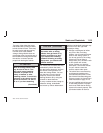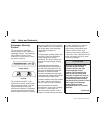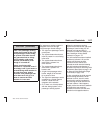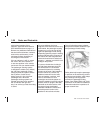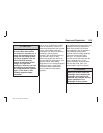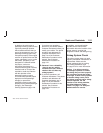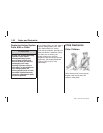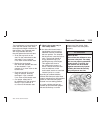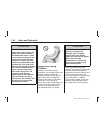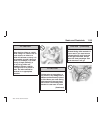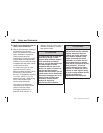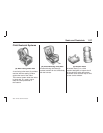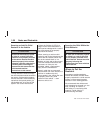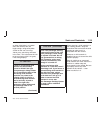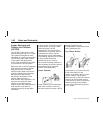
The manufacturer’s instructions that
come with the booster seat, state
the weight and height limitations for
that booster. Use a booster seat
with a lap-shoulder belt until
the child passes the below fit test:
• Sit all the way back on the
seat. Do the knees bend at the
seat edge? If yes, continue.
If no, return to the booster seat.
• Buckle the lap-shoulder
belt. Does the shoulder belt rest
on the shoulder? If yes,
continue. If no, then return to the
booster seat.
• Does the lap belt fit low and
snug on the hips, touching
the thighs? If yes, continue.
If no, return to the booster seat.
• Can proper safety belt fit
be maintained for the length of
the trip? If yes, continue. If
no, return to the booster seat.
Q: What is the proper way to
wear safety belts?
A: An older child should wear a
lap-shoulder belt and get the
additional restraint a shoulder
belt can provide. The shoulder
belt should not cross the face or
neck. The lap belt should fit
snugly below the hips, just
touching the top of the thighs.
This applies belt force to
the child’s pelvic bones in a
crash. It should never be worn
over the abdomen, which
could cause severe or even fatal
internal injuries in a crash.
According to accident statistics,
children and infants are safer when
properly restrained in a child restraint
system or infant restraint system
secured in a rear seating position.
In a crash, children who are not
buckled up can strike other people
who are buckled up, or can be
thrown out of the vehicle. Older
children need to use safety belts
properly.
{ CAUTION
Never do this.
Never allow two children to wear
the same safety belt. The safety
belt can not properly spread the
impact forces. In a crash, the
two children can be crushed
together and seriously injured.
A safety belt must be used by
only one person at a time.
Seats and Restraints 1-33
2008 - Pontiac G8 Owner Manual



